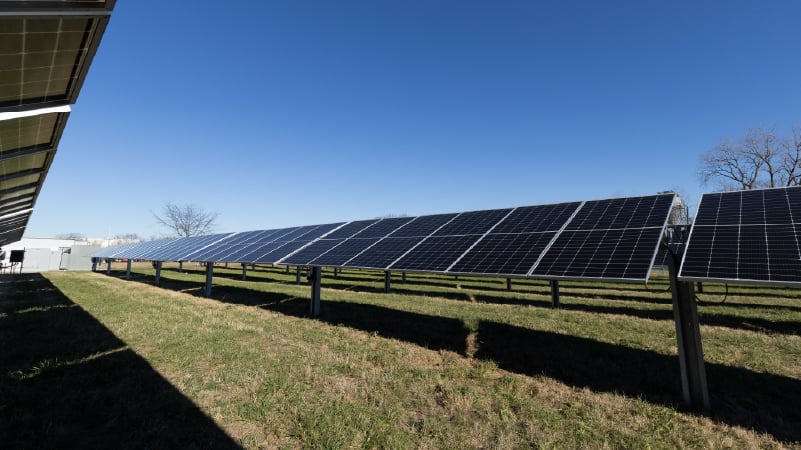The recent collapse of the power grid in Spain and Portugal made it clear that there is no AI or modern society as we know it without energy. But, conversely, energy grids may also increasingly require AI.
The massive blackout that denied energy to most of the Iberian Peninsula in late April occurred following a drop of 15 GW of electricity generation within a few seconds. The exact cause was not immediately reported, with opinions ranging from a cyberattack to unusual atmospheric conditions, and overreliance on renewable sources. Whatever the reason for 55 million people being without power, the only official statement of any note cites “anomalous oscillations in the very high voltage lines”.
Guarding against grid interruption
The disruption highlighted the extent to which the modern world is dependent upon reliable electric power. When the grid goes down, it takes much of society with it. Telecom cellular towers, fiber networks, businesses, data centers, and homes rely on a supply of uninterrupted energy. Last week’s events in Iberia highlighted the importance of a strong and dynamic electrical infrastructure that is supported by sufficient backup power.
Traditional UPS systems and diesel or natural gas generators helped many data centers stay up during the event. More businesses should deploy this technology as a safeguard against grid failure. On average, a UPS can provide five to 20 minutes of respite from a grid failure. It is excellent for short events, but not enough for a major failure. Backup generators can provide a day or two of power, depending on how much fuel is retained onsite. Data centers, for example, typically store enough to last a couple of days.
For many, onsite power generation is fast becoming an attractive option. Whether it is rooftop solar, a natural gas generation plant, or a large battery energy storage system (BESS), the ability to store and generate their own energy regardless of the state of the grid is a way to achieve grid independence.
|
Equipment feature |
UPS |
BESS |
|
Runtime |
5-20 minutes |
1-6 hours |
|
Transfer/response time |
0 |
20-50 milliseconds |
|
Load supported |
Mission-critical loads |
All loads |
|
Location |
Inside |
Outside |
|
Scalability |
Limited |
Flexible |
Table 1. A summary of feature comparisons and differences of BESS and UPS systems based on a Vertiv study.
These storage and generation assets must be served by the latest in power distribution equipment and must be protected from grid anomalies. Modern switchgear, transfer switches, and power distribution equipment must be in place. Aging infrastructure should be scheduled for replacement. Additionally, power control and monitoring systems should be implemented—they enable the organization to stay one step ahead of electrical disturbances. Technology should also be put in place to protect against power fluctuations or surges that can damage IT, transmission, and electrical networks. The bottom line is that organizations must take steps to safeguard their critical systems to facilitate continuous operations.
Grid failures are becoming commonplace
It is important to realize that the recent grid disruption in Spain and Portugal is not an isolated event. Pakistan, Chile, and Sri Lanka have all suffered severe blackouts over the last few years that have impacted tens of millions of people.
Such incidents are not only found in the developing world. A sudden cold snap in Texas caused about two million people to lose power for days in early 2021. A fire at an electrical substation serving London’s Heathrow Airport plunged one of the world’s largest travel hubs into chaos and caused power outages across West London. Two of Heathrow’s terminals had to shut down, and over 1,300 flights were cancelled. It is interesting to note that the data center at Heathrow managed to stay online during the event as it was properly protected.
These incidents highlight the vital necessity of developing comprehensive energy plans for backup systems, resilience, and continuous power. Data centers and enterprises that have already implemented such solutions should review their plans and update them by incorporating the latest technologies. Aging power infrastructure could prove to be a weak link when the next grid interruption strikes.
Growing interdependence: AI, data, and energy resilience
A growing body of research and initial implementations show that AI can also contribute to reimagining power infrastructure and improving energy utilization, management, and efficiency. Despite data centers and enterprises getting the flak for the increasing power consumed, grid-interactive data centers and AI-integrated power grids can increase infrastructure protection and potentially prevent future outages. With enough data consolidated, AI can help with detecting abnormal behavioral patterns, provide real-time performance monitoring, analyze preventive maintenance and equipment gaps, enable predictive capabilities on demand, and anticipate issues before they escalate, among possible use cases.
The emerging capabilities of AI open up whole new vistas of possibility: cures for the worst diseases, the elimination of illiteracy, and the automation of manual or repetitive tasks, among others. AI incorporated into power networks as part of ongoing smart grid initiatives can be one approach to greatly improve grid resiliency. Applying this rapidly developing technology on grids, this currently one-directional dependence can benefit more industries and society in discovering breakthrough solutions as well as responding to routine infrastructure requirements and needs. But none of this can happen unless the energy is available to operate the systems, and the power infrastructure is strong enough to enable that energy to run continuously.
For more information about power infrastructure solutions, visit Vertiv.com.



